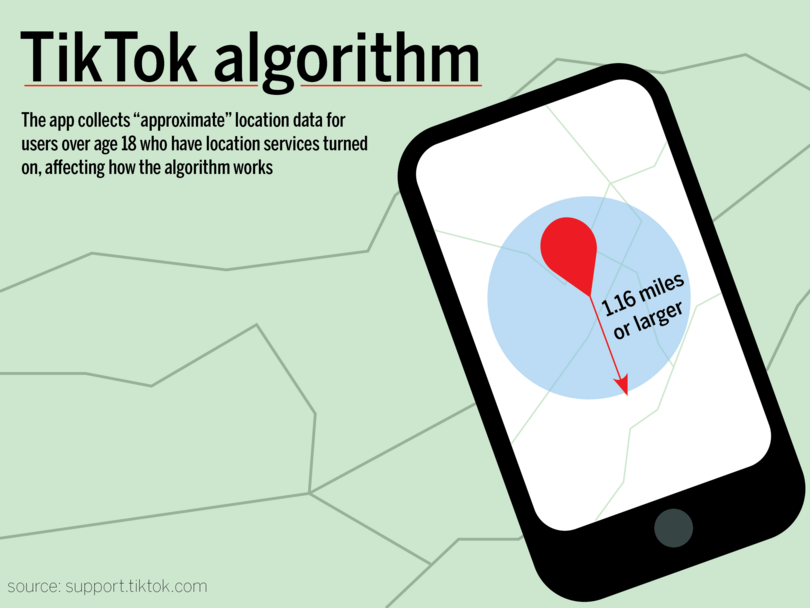FYP flooded with SU dorms, Orange gamedays? It’s TikTok’s algorithm at work.

TikTok’s predictive algorithm puts more Syracuse-related content on local students’ feeds than in years past. Zoey Grimes | Design Editor
Get the latest Syracuse news delivered right to your inbox.
Subscribe to our newsletter here.
Thanks to TikTok’s predictive algorithm, Syracuse University students scrolling through the app might have seen familiar dorm furniture from Sadler Hall, “fit checks” on the Einhorn Family Walk or curated game day outfits.
TikTok’s algorithm, a set of calculations to determine users’ content, has led to SU students finding more Syracuse-based content on their For You Page, the app’s content feed, than in years past.
TikTok’s FYP recommends content by ranking videos based on multiple factors, including content users interact with through likes, shares or comments, a TikTok spokesperson wrote in a Friday statement to The Daily Orange.
The algorithm takes this information and analyzes the videos users interact with, using information from the posts’ hashtags, captions and sound. Posts with #syracuse, #syracuseuniversity or SU location tags may be recommended to users who often engage with similar content.
The algorithm also considers data points such as device and account settings, like device type, country settings and language type. These different attributes are “weighed” based on their significance, according to TikTok’s website.
“A strong indicator of interest, such as whether a user finishes watching a longer video from beginning to end, would receive greater weight than a weak indicator, such as whether the video’s viewer and creator are both in the same country,” TikTok’s website states.
According to the app’s privacy policy, TikTok automatically collects general location data based on the users’ IP address or SIM card, but does not automatically collect precise or approximate GPS data about its United States-based users.
The app does collect “approximate” location data for users over 18 years old who have location services turned on in their app’s preferences. The user’s location is an estimate of about 1.16 miles or larger, depending on the user’s device, according to TikTok’s website.
TikTok’s privacy policy also says that image and audio information, such as identifiable attributes to a particular location, is also collected. The app collects this information to provide users with an “enhanced” experience, giving them more personalized ads and content, its website states.
While TikTok has collected this information since the app’s creation in 2016, Jennifer Stromer-Galley, a professor at SU’s School of Information Studies, said it’s likely TikTok has increased the “weight” of location data in its predictive algorithm to appeal to advertisers in time for the back-to-school season.
“Social media companies are always tuning their algorithms to drive the strongest engagement with their content to help sell eyeballs to advertisers,” Stromer-Galley said.
The TikTok spokesperson said the app is aware of its significance to college students connecting with their campuses. This prompted the app to launch its “add school” feature, which allows users to add their college to their profile and connect with classmates by verifying their school email.
Not happy with your SU content? Users can refresh their FYP or react to videos with the “not interested” icon to curate their algorithm.






